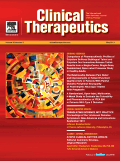
Tetrahydrocannabinol similar in efficacy & safety as placebo in improving spasticity and pain in MS

Tetrahydrocannabinol similar in efficacy & safety as placebo in improving spasticity and pain in MS
Effects on Spasticity and Neuropathic Pain of an Oral Formulation of delta9-Tetrahydrocannabinol in Patients With Progressive Multiple Sclerosis
Clin Ther. 2018 Sep;40(9):1467-1482. doi: 10.1016/j.clinthera.2017.01.016Synopsis
24 patients diagnosed with progressive multiple sclerosis (MS) experiencing pain and moderate spasticity were randomly assigned to either treatment with an oral formulation of Δ9-tetrahydrocannabinol (ECP002A) or placebo for 4 weeks. Improvements in symptoms were assessed by objective and subjective measures, and the incidence and nature of adverse events were monitored. The results demonstrated n...
To view the full content, login to your account,
or start your 30-day FREE Trial today.
FREE TRIAL
LOGIN
Forgot Password?
Explore some of our unlocked ACE Reports below!

Learn about our AI Driven
High Impact Search Feature
Our AI driven High Impact metric calculates the impact an article will have by considering both the publishing journal and the content of the article itself. Built using the latest advances in natural language processing, OE High Impact predicts an article’s future number of citations better than impact factor alone.
Continue



 LOGIN
LOGIN

Join the Conversation
Please Login or Join to leave comments.